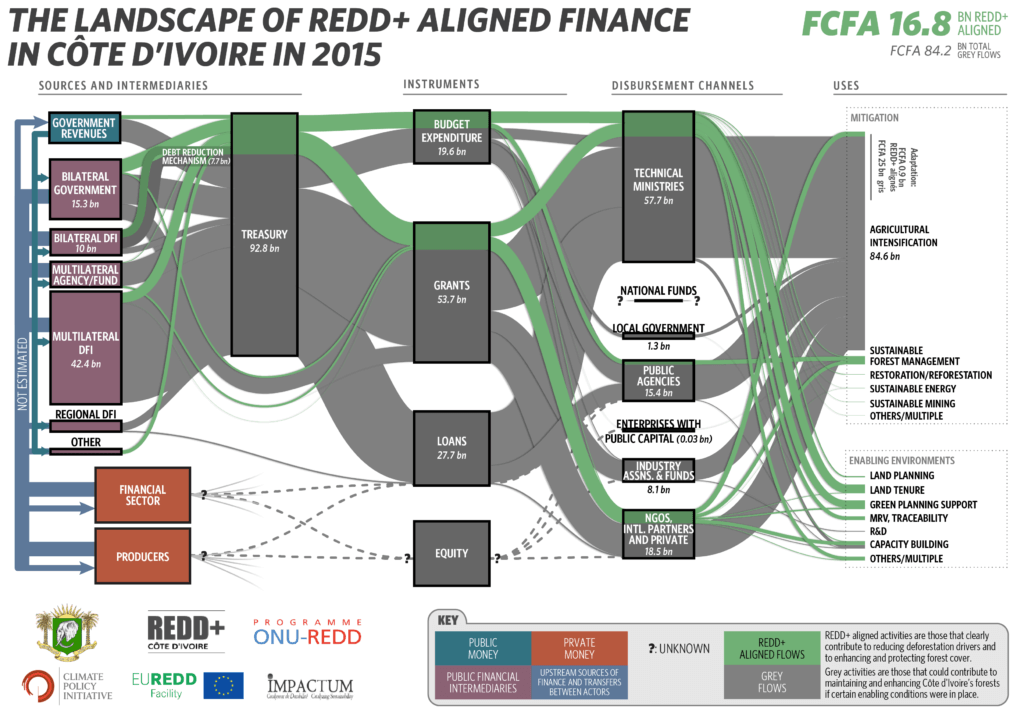Forests in Côte d’Ivoire have come under huge pressure in recent decades. At current rates of deforestation, the country could lose its entire forest cover by 2034.
Agricultural expansion for food and cash crops (in particular cocoa, oil palm and rubber), logging, mining and heavy reliance on wood fuel for cooking mean that few areas remain untouched. Many of these activities also increase vulnerability to the impacts of climate change, threatening the productivity of the land on which Côte d’Ivoire’s economy depends.
There is an alternative. Greening the hundreds of billions of West African CFA francs (FCFA) spent annually on business-as-usual agriculture in the country could increase productivity without sacrificing the country’s forests.
The Government of Côte d’Ivoire has recognized this opportunity and set to work developing a National REDD+ Strategy and Investment Plan to implement zero-deforestation agriculture and forest cover goals.
This study identifies the nature and volume of domestic and international public finance that contributed to limiting deforestation and encouraging sustainable land use in Côte d’Ivoire in 2015. It provides a baseline against which to measure progress towards the levels of investment required to drive sustainable agriculture and reforestation. It also identifies opportunities to increase finance available for implementation of the National REDD+ Strategy.
For example, greening existing agricultural finance from domestic, and especially international sources, could increase REDD+ aligned finance by over five times to FCFA 101 billion (USD 169 million).
The Landscape of REDD+ Aligned Finance in Côte d’Ivoire shows public finance that went to activities that impact on land use in 2015 and that are therefore considered “relevant” in the context of Côte d’Ivoire’s National REDD+ Strategy. These sectors include agriculture, forestry, domestic energy, environment, mining, and planning policy.
Opportunities exist to raise finance from new sources and improve effectiveness of spending, including through fiscal measures, incentives for local government, and a National REDD+ Fund.


